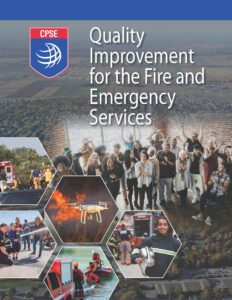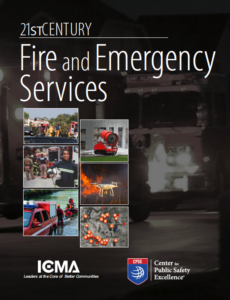
Preet Bassi, CAE
CPSE Chief Executive Officer
by Preet Bassi, CAE
CPSE Chief Executive Officer
Earlier this month, CPSE published our new Quality Improvement for the Fire and Emergency Services book. While part of the CFAI 10th Edition Model update, we set out to achieve something beyond merely a technical update with this new publication.
We began by using a tried-and-true social innovation design tool: the How Might We (HMW) process.
The anatomy of the HMW is:
|
Segment |
Description |
CPSE’s HMW |
|
HOW
|
The “how” assumes there are solutions out there. |
How |
|
MIGHT |
Failure is ok. We can put ideas out there that “might” work or might not. |
Might |
|
WE |
We are in this together. We are going to build on each other’s ideas and together find better solutions. |
We |
|
ACTION VERB |
Action rather than thought is necessary to bring the social innovation to fruition. |
Drive |
|
AUDIENCE |
There must be a beneficiary in mind for the social innovation work. |
The Fire and Emergency Services |
|
DESIRED BEHAVIOR |
What change or enhanced behavior are you seeking? |
To Adopt a Continuous Improvement Mindset |
By using this tool, we came to see our “How” as more than just an update of our existing publications based on the prior edition of the accreditation model but rather as an opportunity to combine them into one book that is based on the 10th edition of the Commission on Fire Accreditation International (CFAI) model and details the process for conducting a community risk assessment, developing standards of cover, establishing a community-driven strategic plan, and self-assessing all segments of the fire department.
During the “Might” segment, we brainstormed endlessly to figure out what were the best ways to convey accreditation-related content. This caused us to create and post new accreditation handouts and videos to the CPSE University Resource Library in addition to publishing the new book. The unrestricted brainstorming led to so many ideas that we will be creating and launching new content throughout 2021.
“We” at CPSE goes beyond staff and includes the 11 external organization stakeholders that offered industry trends and insights, the 469 members of the 18 consortiums that provided feedback on the direction for the new model, the 66 volunteers that developed the 10th edition, the 28 individuals that provided 261 public comments, the Commission on Fire Accreditation International (CFAI) and CPSE Board that approved the model, and the contractors that wrote and produced the publication. While this CPSE team oversaw the development of the model and book, most of the work of improving services will ultimately fall to agencies and officers, making our “we” much larger still.
 The “action verb” segment caused us to ponder whether we were responsible for facilitating, promoting, or supporting our user demographic to the desired behavior. We settled on driving. As CPSE President Allan Cain, CFO shared in the press release announcing the new publication, “CPSE believes in driving improvement together encouraging fire departments, labor, and authorities having jurisdiction to collaborate in meeting their community’s unique public safety needs. The CFAI accreditation model and this new publication provide the framework to facilitate that collaboration.”
The “action verb” segment caused us to ponder whether we were responsible for facilitating, promoting, or supporting our user demographic to the desired behavior. We settled on driving. As CPSE President Allan Cain, CFO shared in the press release announcing the new publication, “CPSE believes in driving improvement together encouraging fire departments, labor, and authorities having jurisdiction to collaborate in meeting their community’s unique public safety needs. The CFAI accreditation model and this new publication provide the framework to facilitate that collaboration.”
The “audience” segment was quite easy and saw us building on our mission to lead the fire and emergency services to excellence. However, we realized that the fire and emergency services is changing. These changes are illuminated in the 10th edition CFAI model with the addition of:
- Category 11, a new Category focused solely on Health and Safety
- Criterion 9D, a recognition of the increasing role of information technology in all aspects of service delivery; and
- The renaming of Category 5 to Community Risk Reduction (CRR) Program to encourage a more holistic approach to CRR.
Lastly, the “desired behavior” is to adopt a continuous improvement mindset. The sky’s the limit for how fire and emergency services agencies can continuously improve. Category by category there are numerous examples:
- Enhanced alignment between the authority having jurisdiction (AHJ) and the agency (Category 1)
- More precise risk assessment methodologies (Category 2)
- Strategic plans driven by community stakeholders (Category 3)
- Adequate financial reserves (Category 4)
- Focused public education programs (Category 5)
- Well-maintained apparatus (Category 6)
- Current, documented, and communicated personnel policies, procedures, and rules (Category 7)
- Training based on agency mission, goals, and objectives (Category 8)
- Adequate and reliable water supplies (Category 9)
- Strategic external relationships (Category 10)
- Health screenings for cancer, cardiac, and behavior concerns (Category 11)
These examples represent only 11 of 250 performance indicators in the CFAI 10th Edition Model that might drive the fire and emergency services to adopt a continuous improvement mindset.
 The 21st Century Fire and Emergency Services White Paper, co-developed by CPSE and the International City/County Management Association, states “As the role of the federal government shifts away from responding to everyday needs, local governments have also begun addressing such issues as climate change, affordable housing, homelessness, immigration, the opioid epidemic, and behavioral health. This reality has led local fire and emergency services to become the health and safety net for communities.”
The 21st Century Fire and Emergency Services White Paper, co-developed by CPSE and the International City/County Management Association, states “As the role of the federal government shifts away from responding to everyday needs, local governments have also begun addressing such issues as climate change, affordable housing, homelessness, immigration, the opioid epidemic, and behavioral health. This reality has led local fire and emergency services to become the health and safety net for communities.”
To meet this new reality, agencies are encouraged to use the “How Might We” tool to innovate. The 10th edition CFAI Model recommends agencies consider their “we” to include the entire department as well as the community, AHJ, and other public safety/public health partners. The self-assessment manual required for agencies seeking CFAI accreditation, has “might” built right in. The Plan section of self-assessment manual allows agencies to identify how they might continually address a given performance indicator or address any shortcomings. The model further outlines the community as the primary “audience” agencies should focus on. To reinforce this concept, the cover of the new publication places the primary focus on the changing needs of communities. These changes may appear in new construction and changing occupancy types, a diversifying of community members, or even a shift in the types of services provided by departments.
Here are a few examples for using “How Might We” to address current or emerging challenges:
In light of COVID-19, an agency might ask “How might we prepare our city for the next pandemic?” Performance Indicator 2B.7 may be part of the answer: “The agency engages other disciplines or groups within its community to compare and contrast risk assessments in order to identify gaps or future threats and risks.”
Observing the almost-weekly protests for racial justice, an agency may ask “How might we recruit and retain underrepresented groups to actively participate in our department?” Two performance indicators in Category 7 may assist with this goal:
- 7B.4 “The agency’s workforce composition is reflective of the service area demographics, or the agency has put forth a reasonable effort by instituting an effective recruitment plan to achieve the desired workforce composition.”
- 7B.8 “The agency’s working conditions and environment accommodate diverse and qualified applicants and retain a tenured workforce that is reflective of its community.”
By all accounts, 2021 and subsequent years will see local governments facing economic challenges. Two core competencies from the 10th edition may aid agencies in answering “How might we weather the financial downturn while still providing our community necessary risk-based services?”. They are:
- 4A.7 “The agency’s budget, short and long-range financial planning, and capital project plans are consistent with the agency’s strategic plan and support achievement of identified goals and objectives.”
- 2D.9 “On at least an annual basis, the agency formally notifies the AHJ of any gaps in current capabilities, capacity and the level of service provided within its delivery system to mitigate the identified risks within its service area, as identified in its community risk assessment /standards of cover.”
So, what is your How Might We? Read more about the 10th edition of the CFAI Model and see how CPSE is driving the fire and emergency services to adopt a continuous improvement mindset.
Preet Bassi has been CPSE’s chief executive officer since 2014 and oversees work across all program areas with a focus on the organization’s strategic direction as set by the Board of Directors. Prior to CPSE, she was the Director of Finance and Administration for the International Accreditation Service and managed their Fire and Life Safety and Building Department Accreditation Programs. She has experience at both the local and state government levels, having worked for the City of Anaheim, California, and the California State Assembly.
Ms. Bassi holds a master’s degree in Public Administration from the University of Southern California, and a bachelor’s degree in Economics and Political Science from the University of California Davis. She is credentialed as a Certified Association Executive through the American Society of Association Executives. She was part of the inaugural cohort for the University of Pennsylvania’s Executive Program in Social Innovation Design and has completed Cornell’s Diversity and Inclusion eCertificate Program.
